Have you ever heard of a Candy koi betta? You’d be surprised to know that there are actually six different types of koi bettas, candy koi being one of the more popular ones!
The history of the koi betta is quite interesting, so let’s learn about this fish, along with the other rare types of koi you might find from a breeder or your local pet store (plus plenty of pictures).
Overview Of The Koi Betta Fish
| Common names | Marble betta, koi betta, candy koi betta, siamese fighting fish |
| Scientific name | Betta Splendens |
| Origin | Asia |
| Care level | Moderate |
| Diet | Omnivore |
| Activity | Active/social |
| Minimum tank size | 5 gallons |
| Idea pH level | 6.8-7.5 |
| Ideal temperature | 75 to 80 degrees Fahrenheit |
What is the koi betta fish?
A koi betta fish—or a candy koi betta fish—is a betta fish with orange, black, and white markings. These colorful markings make it look like a miniature koi fish, hence the name. But how does a betta fish get this color pattern? It’s all thanks to something called a “marble gene.”

The marble gene
Marble bettas are betta fish with splashes of different colors on their bodies. This beautiful fish gets their unique markings from a genetic mutation specifically acquired through breeding, meaning you won’t find koi betta fish in the wild. This DNA sequence is a jumping gene and changes its position over time. In other words, the colors and markings of a marble betta will change as they age.
A candy koi betta is simply a marble betta with specific colors and markings—usually a betta with yellow/orange, black, and white, to resemble the koi fish.
Type of marble bettas
Aside from candy koi bettas, marble bettas come in five other varieties:
- Fancy koi: Fancy koi betta fish have a combination of three different colors. You’ll usually see blue, black, and slightly pink colors in this plakat betta species.
- Galaxy koi: Galaxy betta fish have iridescent scales that make their whole body shimmer.
- Nemo koi: Nemo koi bettas are orange, red, black, and may have white throughout their bodies and fins.
- Tiger koi: Tiget koi’s are a beautiful betta fish with a yellow body and contrasting black and blue stripes.
- Samurai koi: Samurai koi bettas have dragon scaling, and are one of the rarest finds among all koi varieties.

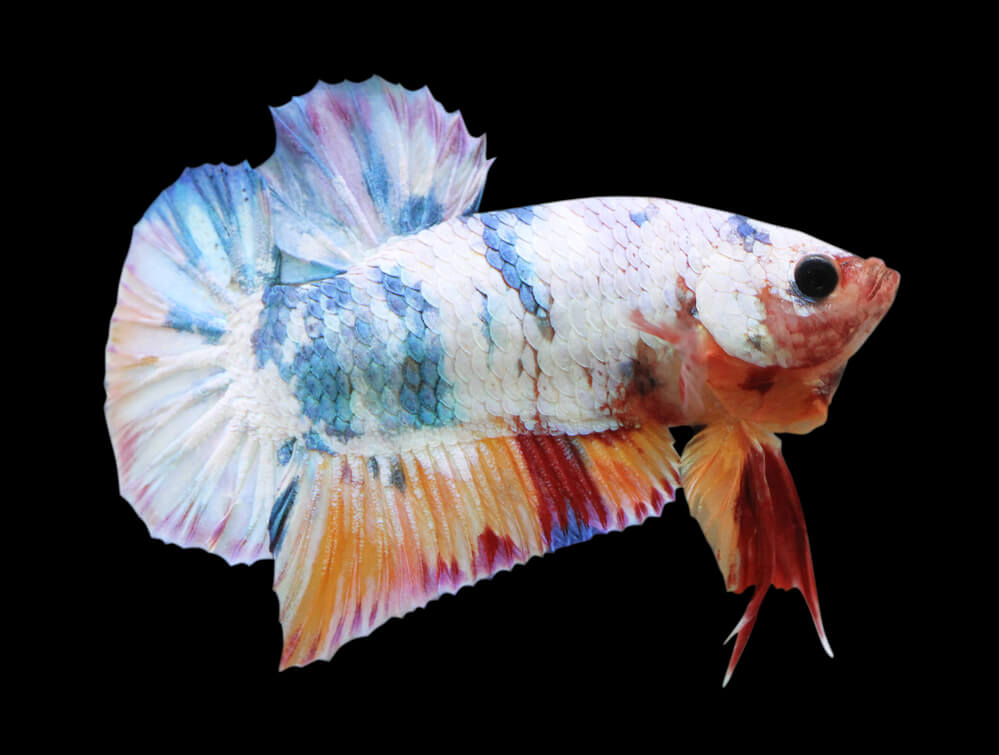

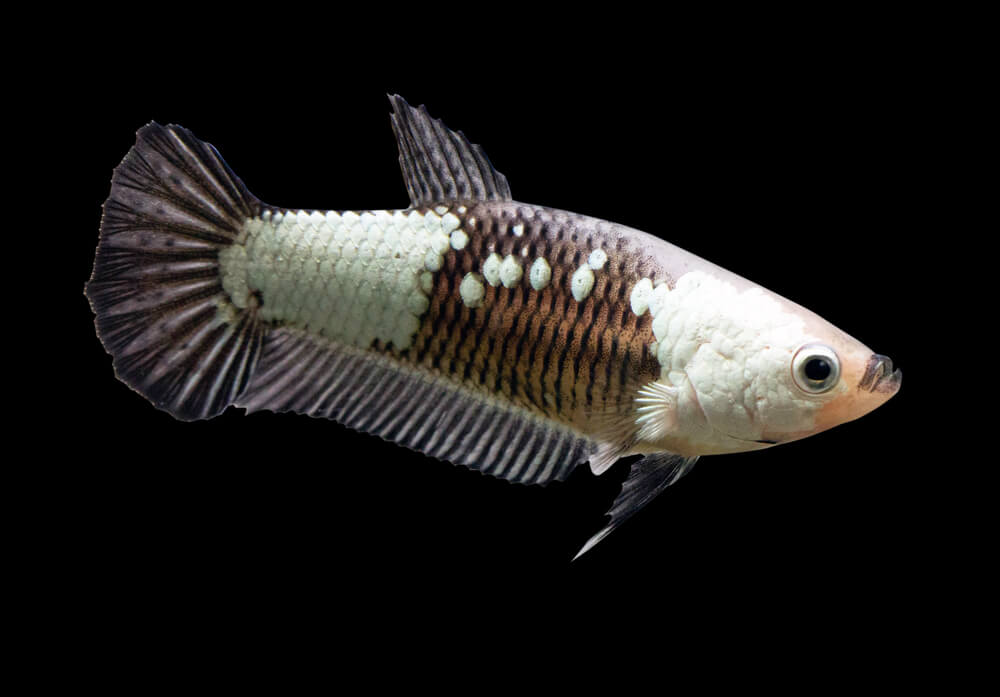
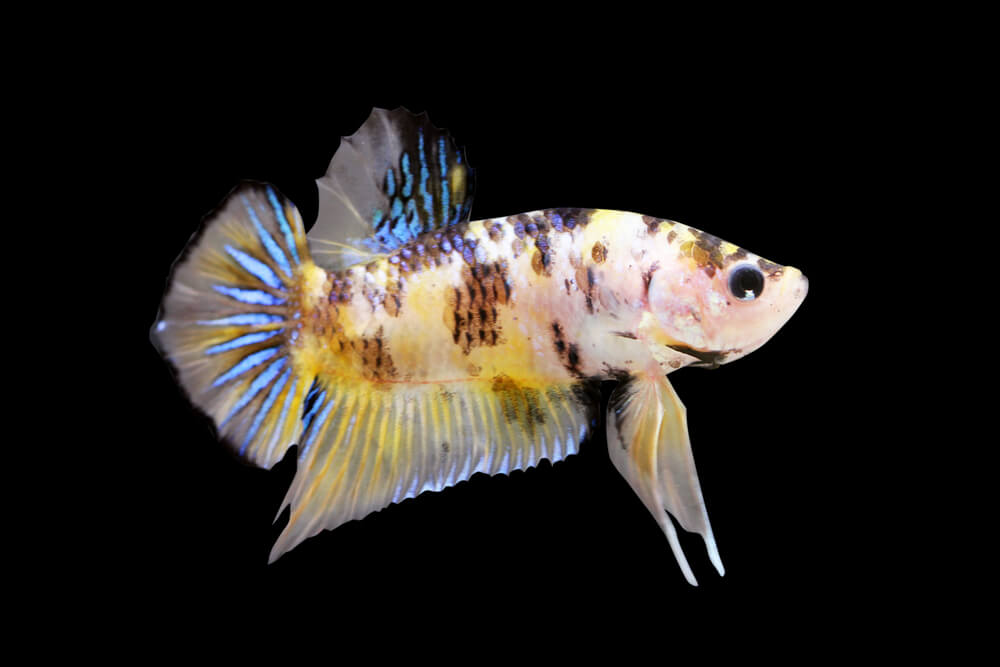
Now that you know a little bit about the candy koi betta fish and its cousins, let’s learn how to take care of one.
Taking care of a candy koi betta fish
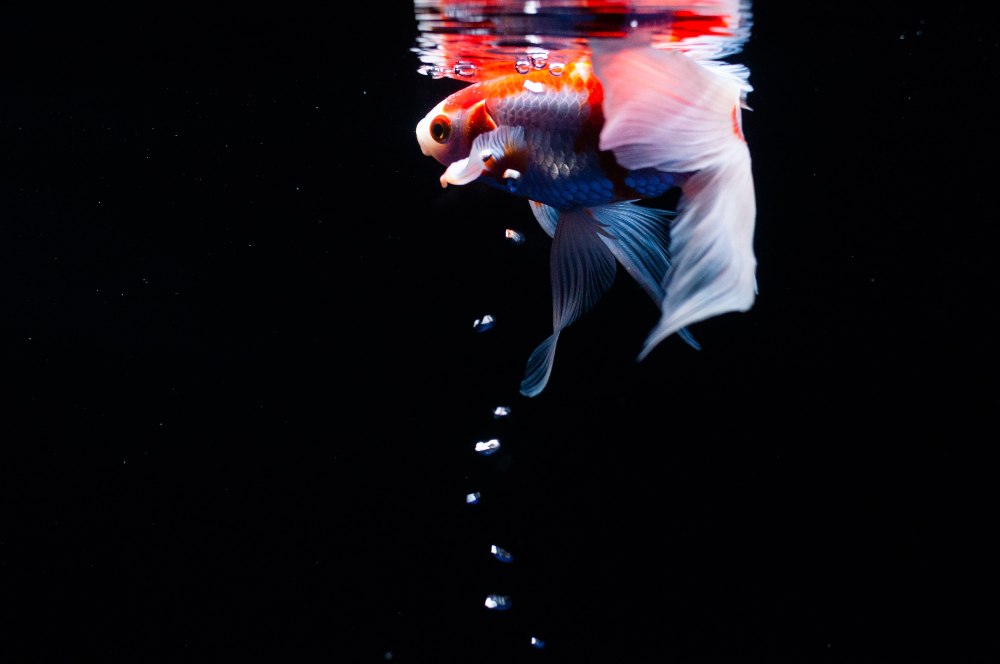
Don’t let their colorful and whimsical aesthetic fool you: candy koi bettas are just as aggressive and feisty as a regular betta fish and require the same level of attention and care.
They grow to be roughly three inches in length and live to be around two to three years old, but they may live longer by following the care and nutrition below.
Tank size
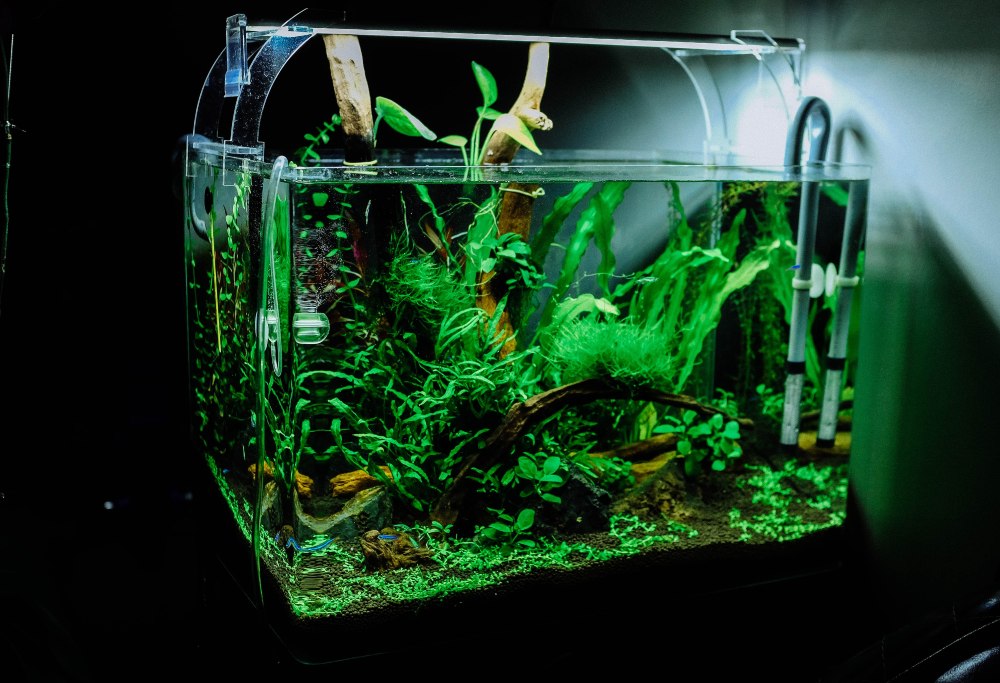
Like regular betta fish, koi bettas need a tank of at least five gallons per fish. Even though these are tiny fish, they prefer swimming in larger spaces. Small bowls stress them out and can lead to health complications, so make sure you get a tank large enough.
Tank temperature
Always keep the tank water temperature between 75 to 80 degrees Fahrenheit. Betta fish come from warm, tropical waters, and you need to replicate this habitat in your aquarium.
Water parameters
Koi bettas need slightly acidic water with pH levels between 6.8 and 7.5. Avoid filling water to the brim because marble bettas come up from time to time to take in oxygen.
Only keep gentle filters like a sponge filter in the koi aquarium to imitate natural soft flowy tropical waters.
Tank setup
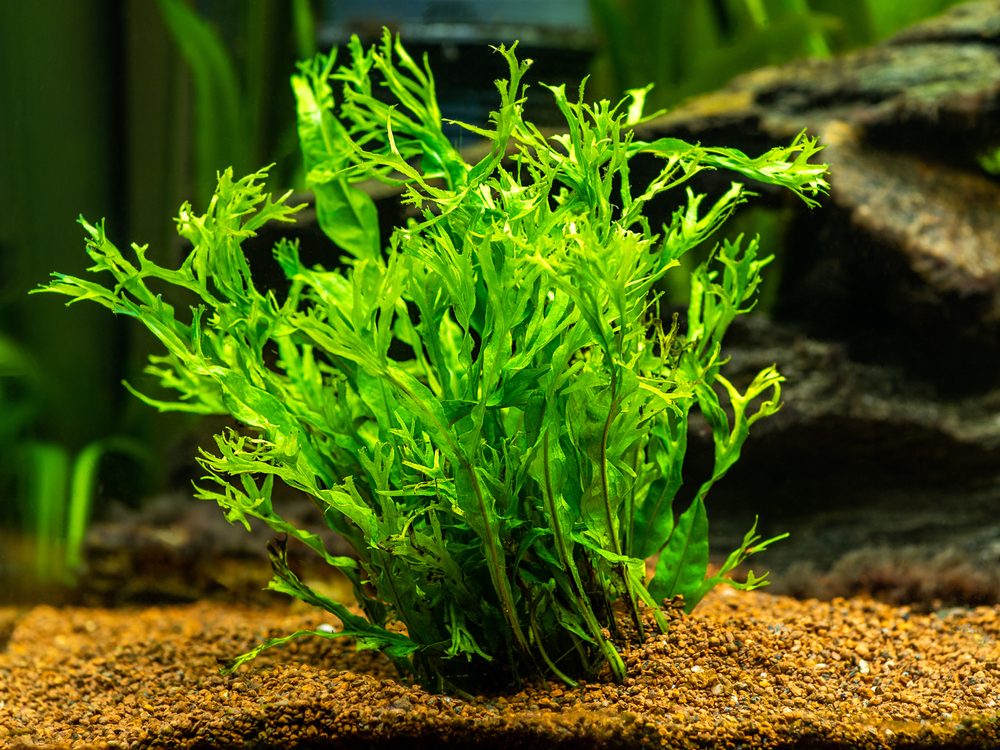
Betta fish love to hide and need tanks with lots of plants. Adding live plants to your betta tank will give them plenty of hiding places and keep them happy!
Plants like Amazon frogbit are also useful for helping your betta fish build their bubble nest.
Keeping artificial plants can also injure the betta fins, so it’s best to avoid them. For substrates, there is nothing better than sand and gravel. Also, don’t keep the fish tank too close to the window since they don’t prefer too much direct sunlight.
Feeding and care
You can feed live foods like blackworms, bloodworms, brine shrimp or fish pellets to a candy koi betta. All food ideas are easy to find at your local fish store.
Keep in mind that things like uneaten food can affect the water quality in your tank, so don’t overfeed your betta fish. Overfeeding can also lead to health issues.
Tank maintenance
To keep the water quality good for your candy koi betta, make sure you are doing weekly water changes. If your tank doesn’t have a filter, change around 30%-50% of the water each week to lessen the shock your fish will experience with the change. If you have a filter, change around 20% of the water.
You’ll also need to do full tank cleans, which you should do every 6-8 months.
The difference between female and male koi betta fish
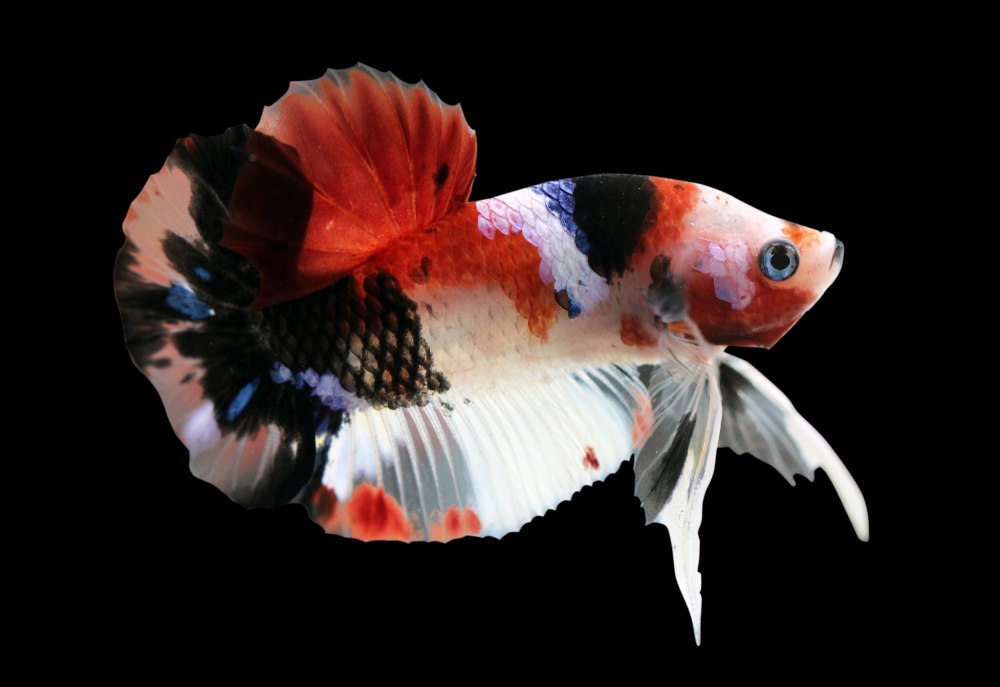
Identifying females from the male betta fish may be confusing, especially for new hobbyists. The easiest way to differentiate between the two is by looking at the fins. Female koi bettas have smaller fins than male bettas.
Male koi bettas have brighter bodies than females, which is another distinguishing point. Male betta fish also have a larger head than females, and their bodies are bulkier.
Conclusion
There are many different types of betta fish, but the beauty of the candy koi betta draws many people in. If you’d like to find yourself a betta of the marbled variety, like the candy koi betta fish, it’s best to reach out to local breeders in your area!
